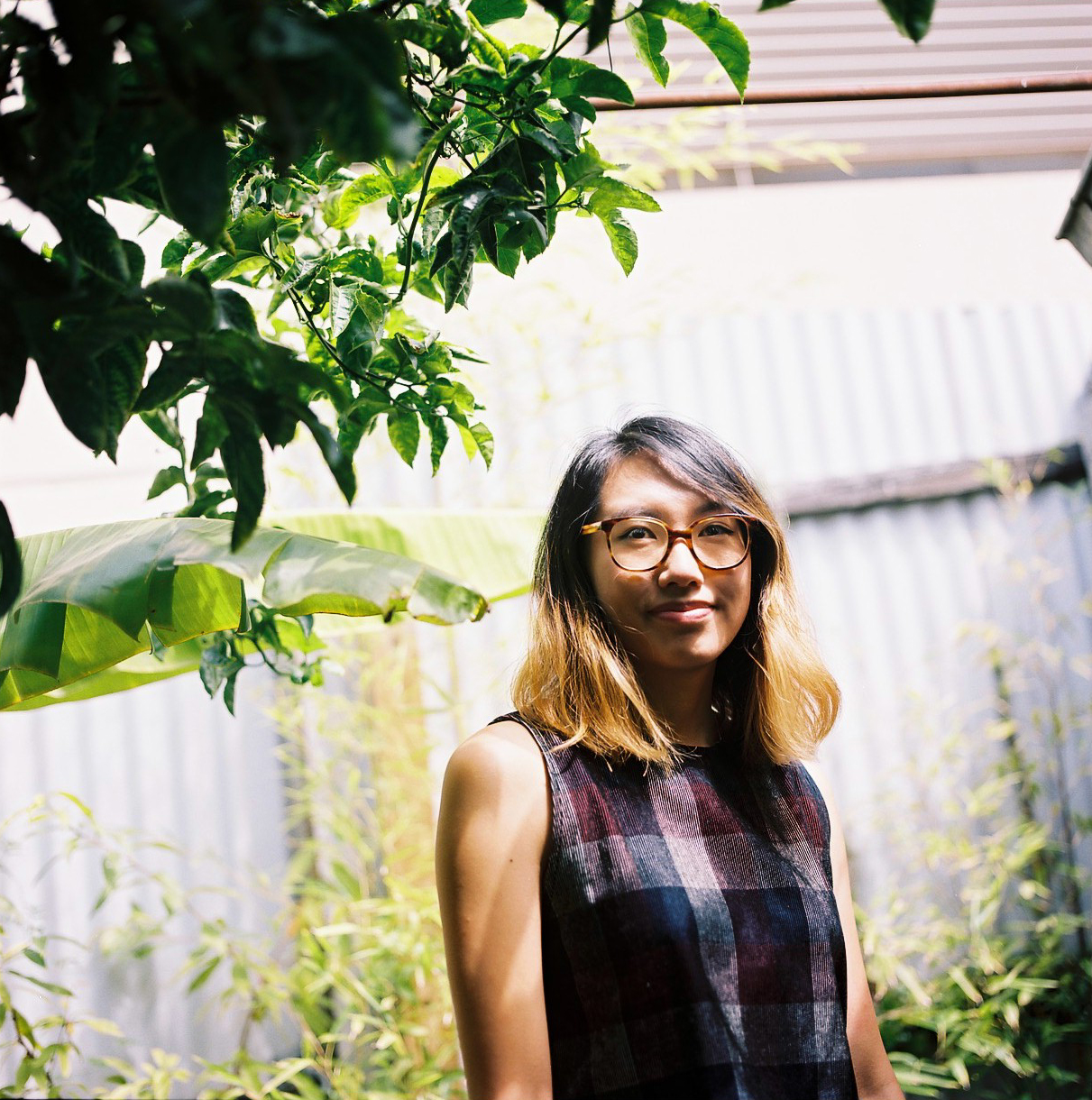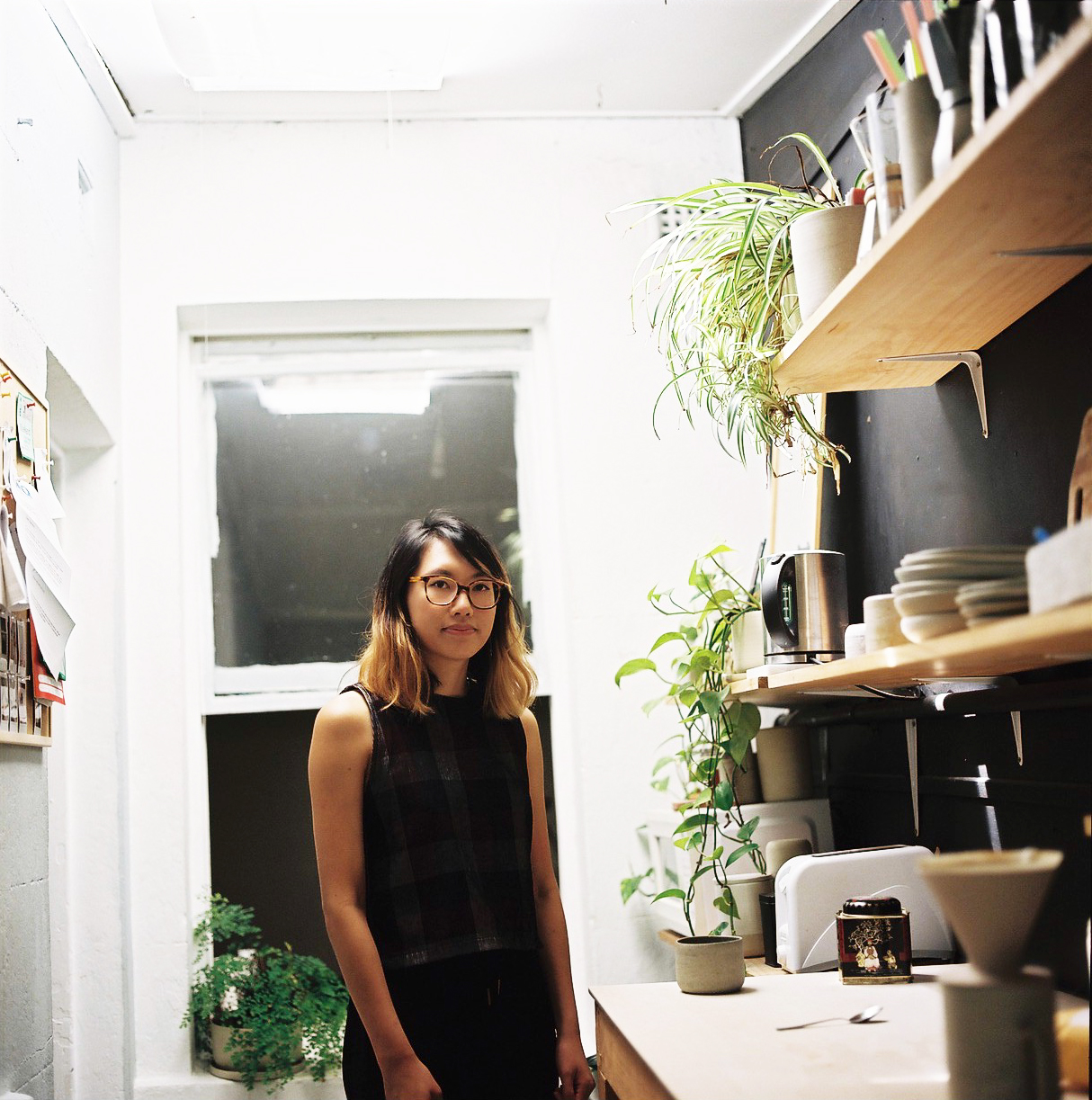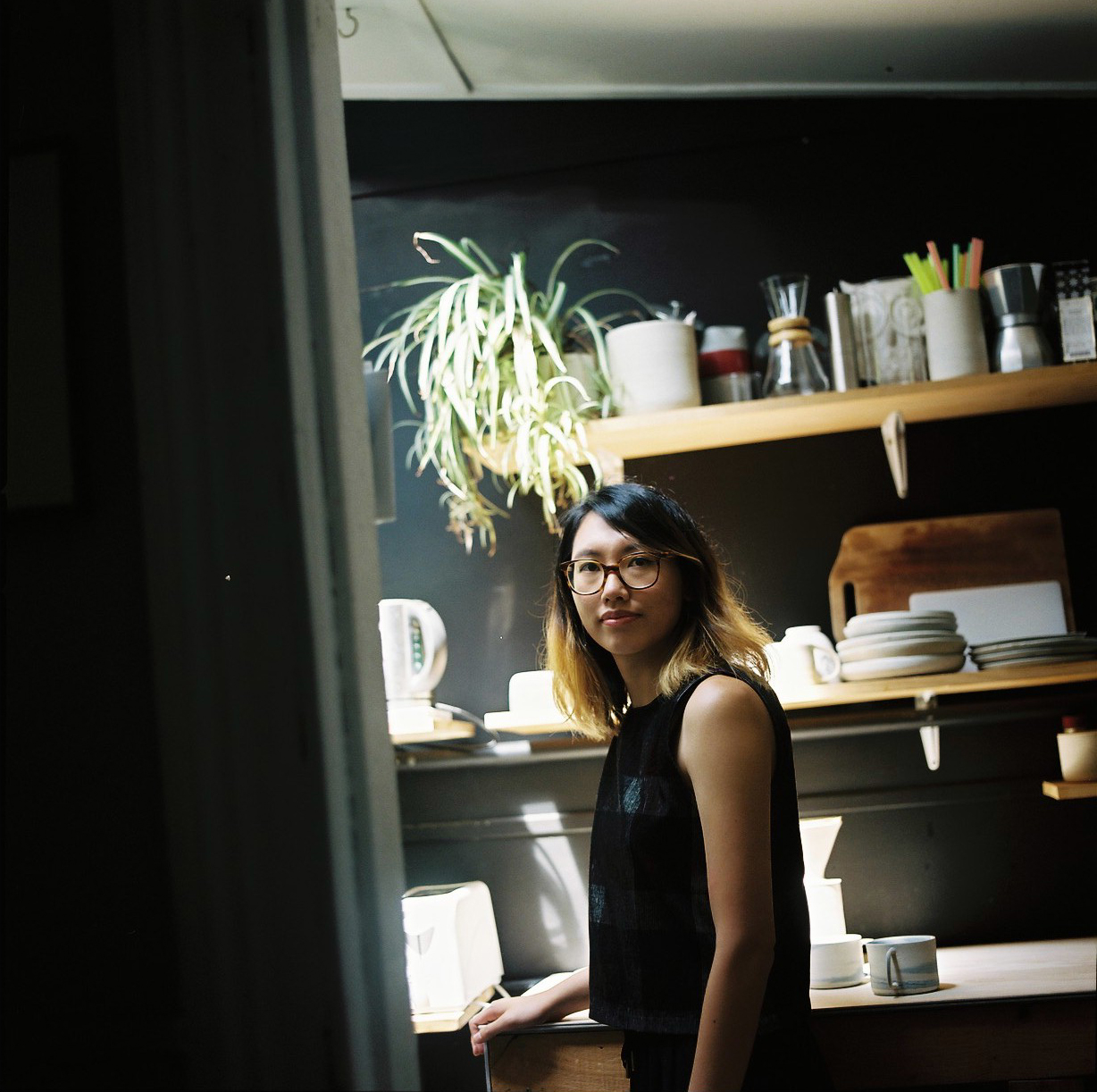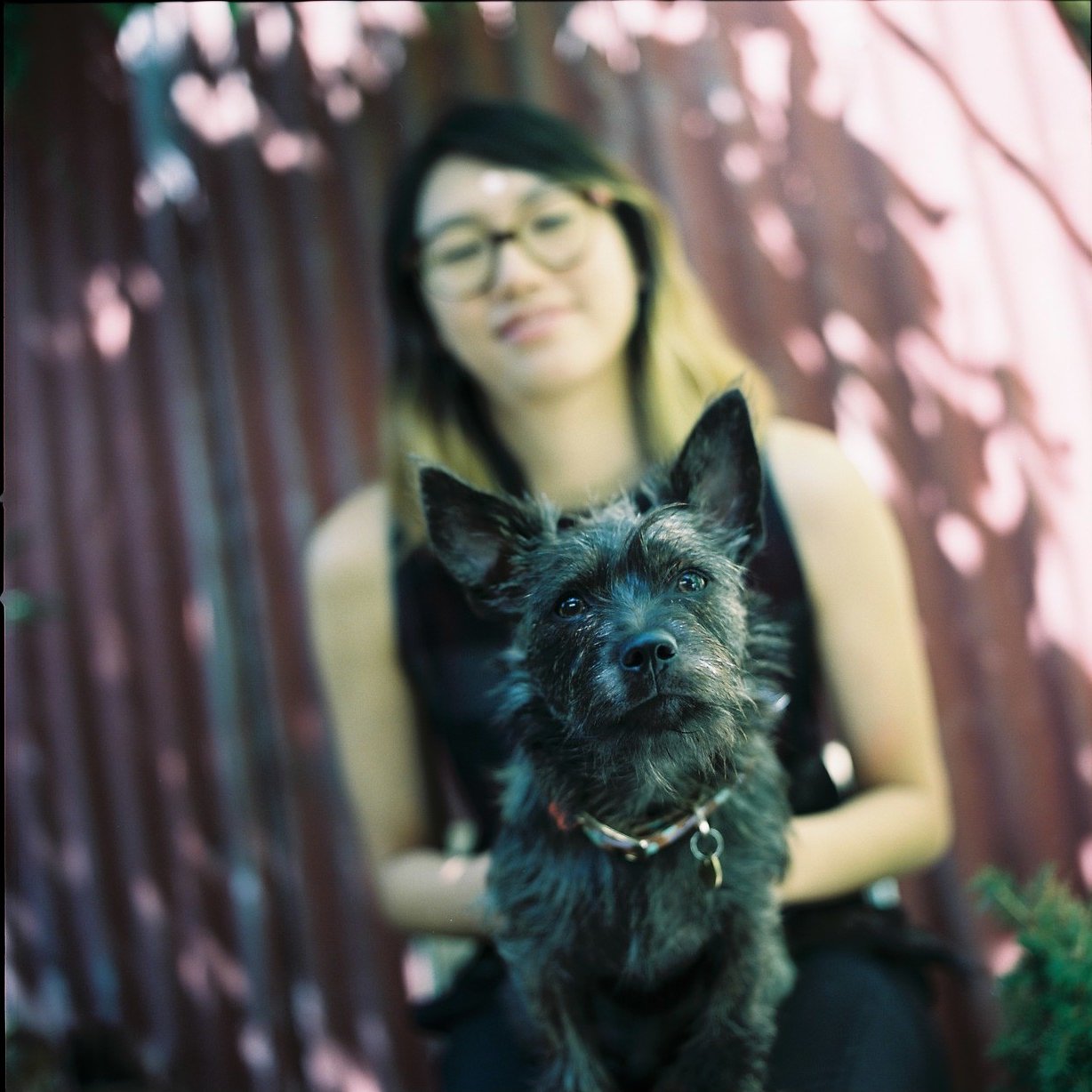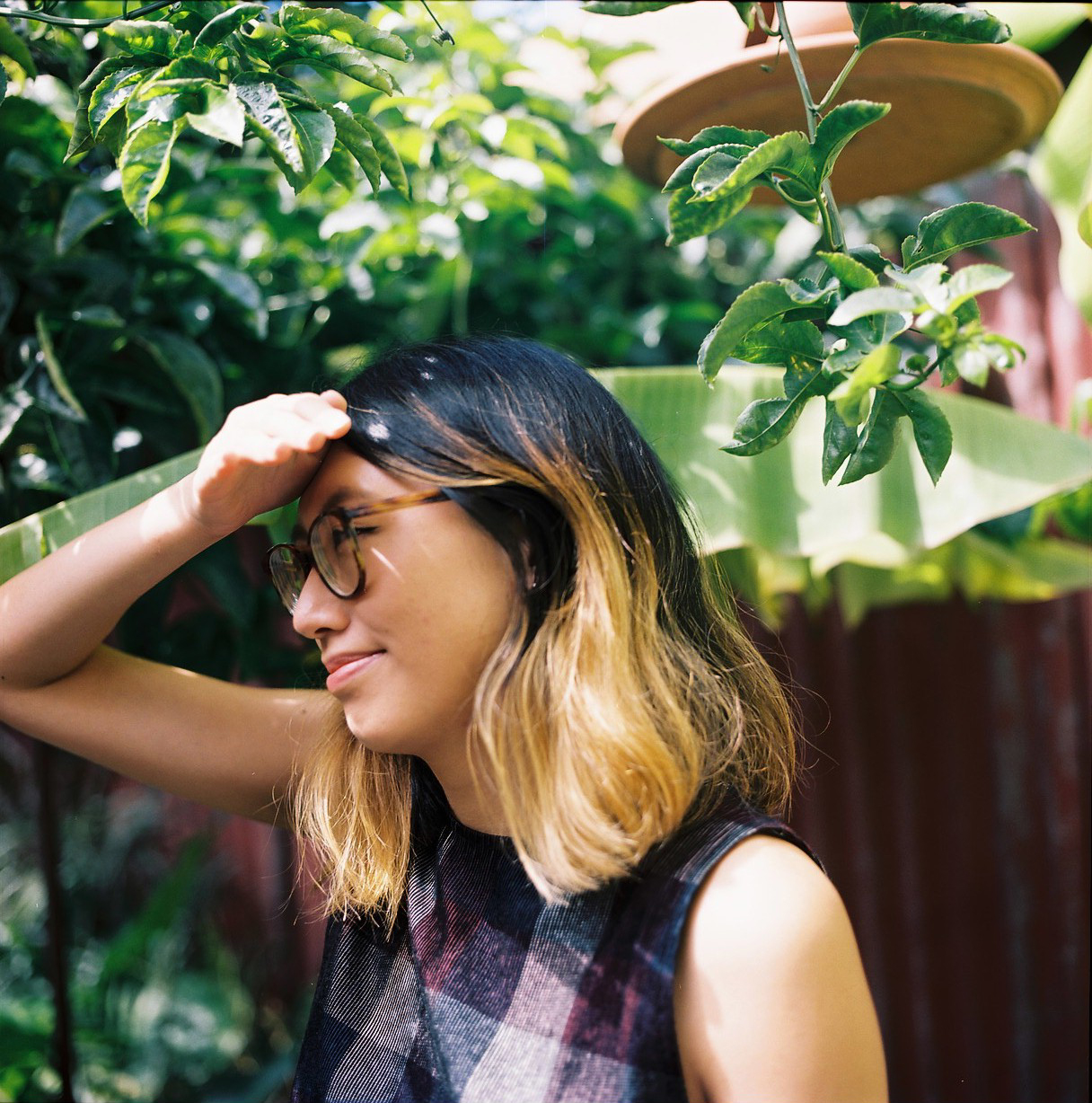Interview #10 — Stephanie Yap
by Leah Jing McIntosh
Stephanie Yap is a Melbourne-based graphic designer and one half of Ghost Wares, a ceramics studio started in 2016 with Matthew Vrettas.
Steph speaks to Leah Jing McIntosh about aesthetics, artefacts and maintaining a sense of play.
View Clay, a photo series from Ghost Wares here.
How did Ghost Wares come to be?
Matt and I started pottery together, as a weekend hobby. We both have design backgrounds and an interest in objects, so it was fun sharing the experience of learning a new craft. We’ve always wanted to collaborate on something together, so as our work developed and began to express our aesthetics and ideals, we thought that it would be fun to give it a name and start selling our work.
At the moment we are quite limited by how much we can produce. It’s quite a long process; you throw an item on the wheel, then you let it dry partially, put it back on the wheel and turn it. Then it goes in for a bisque firing, which is a lower firing to get all of the moisture out of the clay, after which it can be glazed before going back in the kiln for the final firing.
As much as we would love to speed up this process, or increase our production capabilities, there is something lovely about producing such a slow product. I think that the limited amount of our work out in the world helps each object feel special.
Is there a story behind the name?
The name ‘Ghost Wares’ is a nod to the pottery scene in the film Ghost (1990)—we decided to embrace that joke. The name doesn’t take itself too seriously and expresses the playful nature of our work, but it still feels succinct and a little grown up.
Our intention is to make objects that will last, that are timeless but still playful. We want people to relate to the objects, but we feel that they need an element of restraint that gives them a sense of longevity.
It’s an arresting combination—playfulness and timelessness. A lot of artwork takes up serious or heavy subject matter that aims at timelessness, and lacks the sort of lightness or playfulness that Ghost Wares achieves.
We began making ceramics because we wanted to make objects that we like, and we are still doing it for the same reason. We want these objects to last us a long time and remain relevant to us, so we do our best to make them as well as we can and design them in a way where we will hopefully still like them in the future. The playful aspect emerges when we design an object, we want it to be relatable and feel friendly.
It’s also fascinating to consider that your work emerges from a collaboration—how do you navigate this?
We constantly talk about things— when one of us makes something new or thinks of a new idea, it will probably come up in a conversation later in the day; we end up having an informal design review and the work evolves through that. By keeping it as an ongoing conversation, we continue to evolve our product and process.
We try to make things that we would like in our own home. No single piece is driven by a big idea; it’s a range of pieces influenced by our experiences and feelings. Before we started doing pottery, we noticed that we both preferred to use certain mugs from the odd set that we had, so when we began making our own work we thought about the aspects that made us prefer these objects and this influenced how we make our mugs.
For example, we would occasionally pick a flower when we were out walking. This small thing would add just a little bit to our day, which is why we began making bud vases. Even though the objects seem so simple, they are influenced by our experiences and personalities, which is why the range is constantly evolving, it changes as life changes us.
So far, Liminal has been interviewing photographers, models and illustrators, who all engage in quite an overt representation of Asian-Australians in their artistic practice. With ceramics, your influences or references can be much more submerged.
There is so much amazing pottery from China, and other Asian countries, I would love to say that this heritage has a large influence on my work, but I think it is more heavily influenced by the environment I am in. Being a partnership between Matthew and myself, Ghost Wares already has a number of different influences. Matthew is from South Africa and my parents are from Malaysia; we are not representing any particular place. Our work feels very neutral to us, but I wonder if, in a way, that this is an expression of the social landscape that we find ourselves in. I wonder how our work would be interpreted if it were buried and discovered in a few hundred years’ time, what conclusions would be made about us. Our work has the human hand in it, but it doesn’t express race specifically. That cultural significance is embedded in these objects - it’s what gets left behind. But at the time of making the work we are not in a position to understand the significance of this.
Lately I’ve been thinking about artwork and artistic styles that have sourced inspiration from other periods and other cultures, and the line between inspiration and cultural appropriation seems to be of more and more importance for artists working today. Do you ever find yourself navigating this kind issue in your work?
Within our ceramics, we don’t really find ourselves navigating this issue. Our product is quite neutral, so cultural symbolism doesn’t come up all that often. However, topics like this seem to be getting more coverage in the media and I do find myself thinking about the line between appropriation and inspiration more and more.
Cultural appropriation is a difficult topic. I think that most people want to be accepted within their environment, even if they are different. When people begin to show interest in your culture, it is a great thing, you begin to feel accepted. But there is definitely a line that can be crossed with this, there is a point when it can feel that someone is using an aspect of your culture that has significance to you, without respecting where it comes from or what it may mean to you. It feels like it cheapens that aspect of a culture and I feel like this is where the insult comes from.
I think the only way you can educate people about culture is to share it with them, but this is where the intricacy lies. You have to realise that people’s cultures are important to them and we have to learn how to be sensitive to this. You have to look at the context, the situation. in some cases it’s entirely offensive, in others it’s interesting and exciting.
I think we have to really try hard to listen to other people, and engage with them and what they’re doing. If something is hurtful, we need to respect this. If someone is saying, I’m hurt by this, we need to stop doing it. It’s so important to enter into dialogue with an open mind, we might not come to a conclusion but it’s important to talk about these things, we don’t want to isolate people.
When did your parents migrate to Australia? How do you navigate intergenerational cultural differences?
My parents moved here from Malaysia in the early 80s. They have worked hard to build a life for themselves and even harder to give me the opportunities in life that I have had. They have always been very open with me about this, keeping this conversation going over the years has made me aware of the sacrifices that they have made, I feel grateful but also a bit guilty. I cannot imagine how difficult it must have been for them to start a life here, I am glad that they have tried to help me understand this, but I sometimes feel like I am not taking advantage of all the opportunities that they wouldn’t have had.
It’s so rare to have Asian Australian representation in the media. Has this lack of visibility affected you?
I grew up feeling a bit lost. I didn’t really know how to resolve the fact that I’m a child of immigrants, or that I’m detached from my culture. I was one of very few Asian students at my primary school. I went to Chinese school on weekends, but I never really learnt or got a handle on the language - I wasn’t immersed. My mum tells me that I came home from kindergarten one day and told her I didn’t want to speak Cantonese any more because a boy had teased me about being Asian. As a young child I wanted to be able to fit in and now I feel like I lost a part of my heritage.
I really hate that that happened to me, that I made my decision because of that incident. Now I feel guilty that I can’t speak Cantonese, which has made it difficult to communicate with some of my relatives overseas. It’s unfortunate that I abandoned this skill in an effort to fit in and assimilate.
Although representation of Asians in Australian media hasn’t changed drastically, it’s great people are now able to seek them out in alternate types of media online such as youtube, where everyone can have a platform to communicate if they choose to. This is reassuring for me, knowing that people have the ability to find others that they can relate to.
Do you have any advice for emerging artists?
I feel kind of silly giving advice to people because I don’t follow it myself most of the time. Try not to listen to that voice of self-doubt in your head that questions whether you’re ever going to be good, talented, successful enough. Not everyone is going to like what you do or understand what you’re about and that’s ok. Just be present and willing to learn, even if it’s from your own mistakes. This is probably applies to everyone, not just creatives, but it’s something that I struggle with all the time.
Do you have any favourite designers/ceramicists?
A lot of my favourite artists and designers actually tend to be Asian. I really admire the work of Audrey Kawasaki and James Jean. They are incredibly talented illustrators. In terms of ceramics, Takashi Endo produces some beautiful work.
What are you currently listening to?
I’m currently listening to the album Ideas of Aesthetics by Thrupence. I’m also always listening to podcasts. My favourites include Reply All, This American Life and Strangers.
How do you practice self-care?
I have a few different things that I like to do for myself. I try and get to a yoga class, I love reading in the bath, and I also like just generally hanging out with my dog, Gus. He makes me so damn happy.
What does being Asian-Australian mean to you?
I am aware that even though I have grown up in Australia, I may look different and have different influences to what people perceive that the typical Australian would have. Being asked Where are you from? Where were you born? Where are your parents from? is not always easy. It would nice to just be accepted as being a person. These questions may not always be a bad thing though; at least people are asking. Even though they aren’t always comfortable conversations, I hope that they will eventually lead to more understanding between people from different backgrounds.
find out more
Interview & photographs by Leah Jing McIntosh

